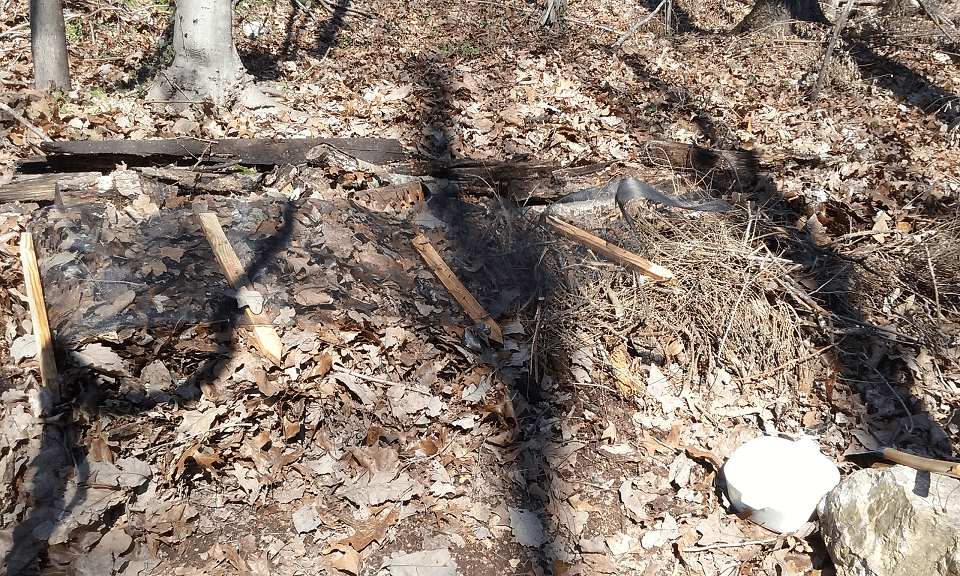Working on my composting area, I was thinking about how different the forest soil I’m working in is from yard soil that is just feet away. Our region has heavier clay-based soil, in some areas the soil is red or orange. It is thick and holds water, and it is definitely not something you’d want to pot plants with. The forest soil, by contrast, is darker and loamier, and may actually retain less water. I wondered if it would be suitable for container use.
From what I can tell, forest soil is typically low in nitrogen–it is after all predominantly dead leaves and wood, lots of brown materials and little green. The greens I am composting are nitrogen-rich, coffee and fruit/vegetable peels particularly. I am adding these every 3 or so days, as well as a new infusion of forest soil and dead leaves. Originally I wasn’t too concerned about being able to reuse this compost, I just wanted to reduce the household waste, but now I’m more interested in being able to use it this spring.

I don’t know if that picture even looks like anything to anyone else, but that’s my little area in the forest. You can see part of the hugelkultur I’m building up on the far right. I like working on it.